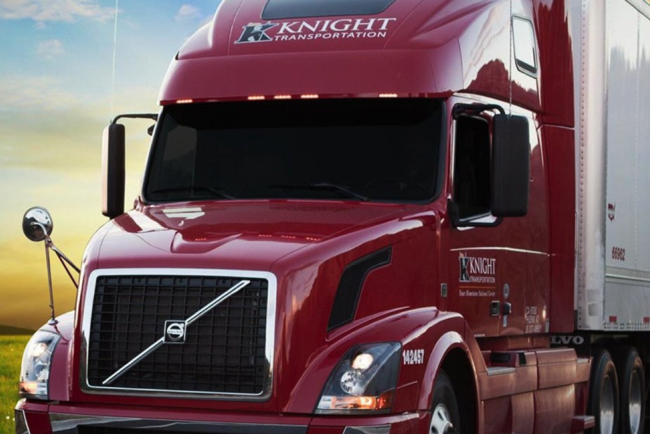Knight Transportation Reports Drop in Revenue and Income in First Quarter
Knight Transportation, Inc. (NYSE: KNX), one of North America’s largest and most diversified truckload transportation companies, reported a drop in revenue and income for the first quarter of 2016.
Revenues were down 6.3% and net income dropped 23.7%.
Dave Jackson, President and Chief Executive Officer, noted: “The freight environment was less attractive in the first quarter of 2016 compared with the same quarter a year ago. We attribute the change to excess trucking capacity, higher inventory ratios, and weak U.S. industrial production for the full quarter of this year. Freight volumes and revenue per loaded mile remained relatively stable during the first quarter compared with the 2015 quarter. Opportunities in the non-contract market were challenged by falling load counts and additional price competition, particularly from non-asset brokers.”
He continued, “The more competitive freight environment and fewer non-contract opportunities have begun to pressure our overall revenue per loaded mile. However, with significantly declining new truck orders, the recent expansion of industrial production in March, and increased regulatory burdens expected to phase in over the next several quarters, we currently expect an improved environment later in the year.”
The company further state: “In the first quarter, the trucking segment achieved an adjusted operating ratio of 82.0% compared to 79.2% from the same quarter last year. Increased fuel expense and less gain on sale of revenue equipment impacted the operating ratio by approximately 240 basis points. Driver wages also continue to be inflationary when compared to the first quarter of last year; however, the negative impact was partially offset by improved cost control in the operations and maintenance area of our business. Revenue per tractor, excluding fuel surcharge, increased 0.2%, year over year, attributable to an essentially flat average revenue per loaded mile, a 1.8% increase in average miles per tractor, and a 120 basis point increase in our non-paid empty mile percentage. We remain focused on improving the productivity of our assets, developing our freight network, and intensely controlling our costs.”
Category: Featured











